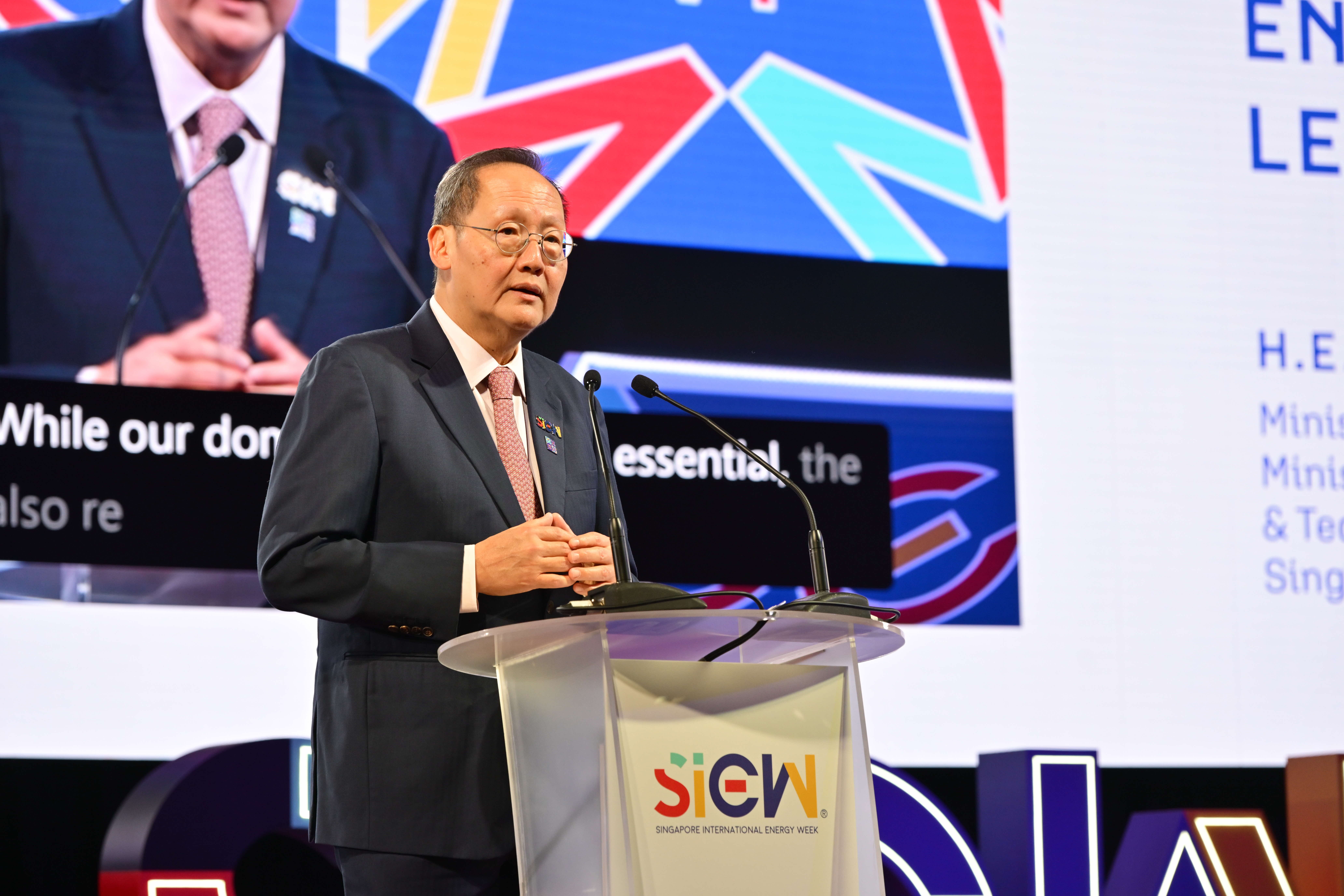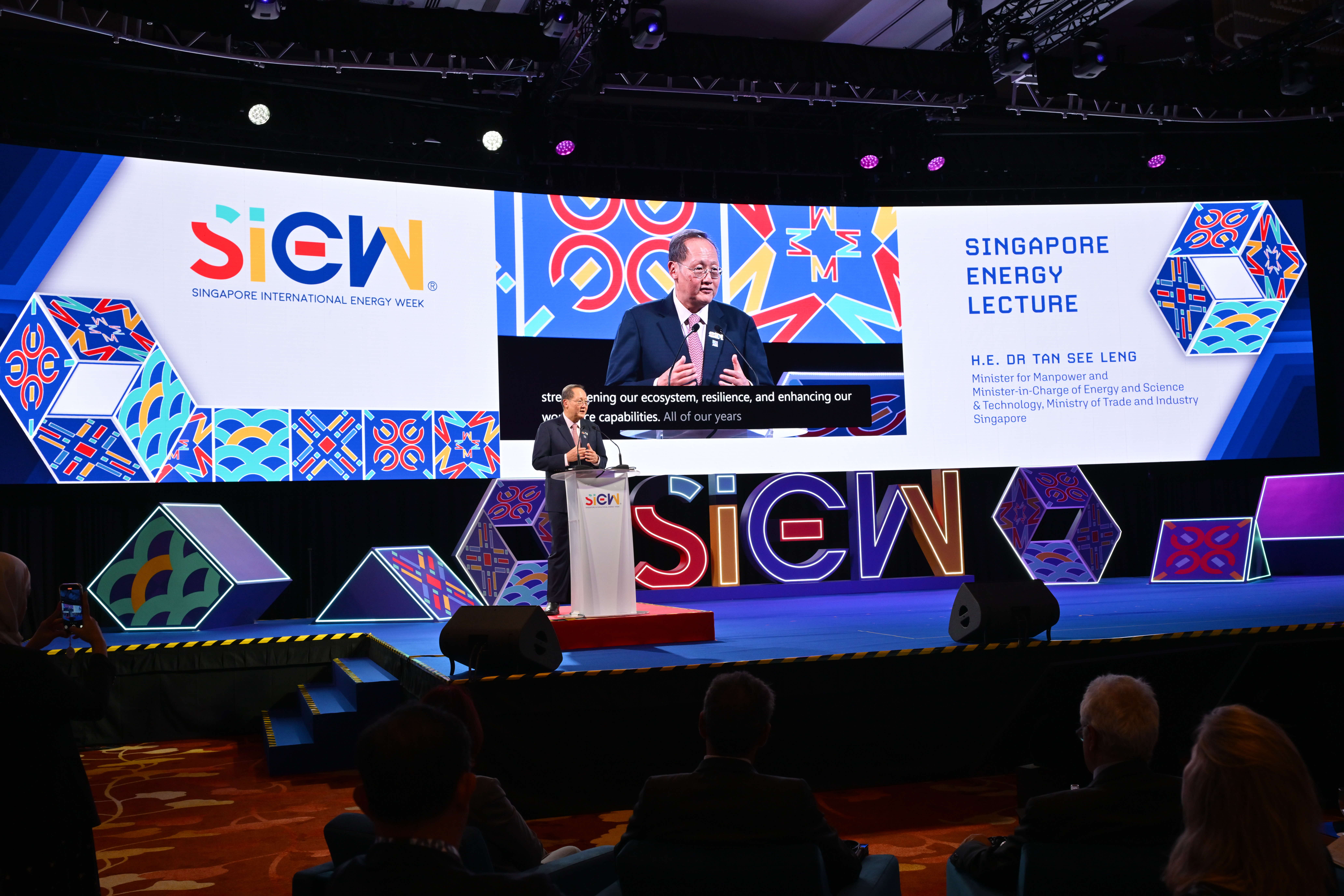At SIEW 2025, Singapore's leaders outlined a new chapter in the nation's energy story. It is one shaped by system building, regional collaboration, and human capability.

The 18th Singapore International Energy Week (SIEW) opened with a clear message of collaboration and foresight.
In his welcome remarks, Puah Kok Keong, Chief Executive, Energy Market Authority (EMA), called on the global energy community to embrace the energy transformation with vision, investment, and collective resolve.
Dr Tan See Leng, Minister for Manpower and Minister-in-Charge of Energy, Science & Technology, Ministry of Trade and Industry, linked Singapore's next energy chapter to SG60. This new chapter is guided by four pillars: Sustainable pathways, Interconnectivity, Ecosystem resilience, and Workforce capabilities.
Together, their messages reflected Singapore's pragmatic approach to 'Envisioning Energy Tomorrow, Building Systems Today', this year's SIEW theme.

Sustainable pathways: Diversifying for the future
Singapore is pursuing a diversified mix of clean energy sources to build a resilient and low-carbon future. Solar remains central, with over 1.7 gigawatt-peak (GWp) of installed capacity, with plans to exceed 2 GWp before 2030.
Alongside this, studies are underway to assess geothermal potential. Singapore is also evaluating small modular nuclear reactors (SMRs) as a possible safe and reliable baseload option.
To strengthen local expertise, EMA is signing new cooperation agreements with the Idaho National Laboratory and the Battelle Memorial Institute. The Government has also released a Background Paper on Singapore's Nuclear Energy Capability Building Journey. These efforts represent an important step in preparing for future energy technologies.

Interconnectivity: Powering partnerships across borders
Dr Tan noted that Singapore's energy story is intertwined with those of its neighbours and international partners. Regional electricity trade and the use of low-carbon molecules such as hydrogen, ammonia, and biomethane will anchor ASEAN's shared energy future.
Singapore is also advancing multiple cross-border initiatives. These include hydropower imports from Sarawak and electricity trade Memorandum of Understanding (MOU) with Indonesia and Vietnam. A 300 megawatt (MW) biomethane sandbox will catalyse supply-chain development, while a Keppel-led ammonia pilot has progressed to front-end engineering design studies.
These initiatives reflect growing regional momentum to build an integrated ASEAN power grid. They also underscore Singapore's role as a connector in the region's emerging low-carbon network.
Ecosystem resilience: Building stronger systems
Natural gas will continue to play a key role as Singapore strengthens generation efficiency and system reliability. Keppel Electric and Sembcorp Cogen will receive S$44 million in incentives to deploy advanced, more carbon-efficient plants.
The newly formed Singapore GasCo will centralise gas procurement from 2026. A second LNG terminal, due 2030, will expand import capacity by 50 percent.
Singapore is working to maintain a world-class grid. The Future Grid Capabilities Roadmap and the island-wide rollout of smart meters by 2026 will support more flexible and data-driven energy management.
Workforce capabilities: Empowering people for the transition
People remain central to Singapore's energy transition. The clean energy workforce is projected to grow by around 60 percent by 2034, supported by the EMA Clean Energy Jobs-Skills Insights.
On Jurong Island, a S$62.5 million Low-Carbon Technology Translational Testbed (LCT3) will anchor industrial innovation. The upcoming Research, Innovation and Enterprise (RIE) 2030 Strategy will further expand research and deployment funding for decarbonisation.
These initiatives reflect a people-centred approach to the energy transformation. They support collective progress toward a secure and sustainable energy future for Singapore and the region.
As SIEW 2025 begins, Singapore signals confidence in navigating the energy trilemma. The nation will continue to balance sustainability, security, and cost-competitiveness by building systems today that power tomorrow's low-carbon future.
Stay tuned as the conversation evolves throughout the day. Follow @SIEW_sg on Telegram and X (formerly Twitter) for the latest insights.